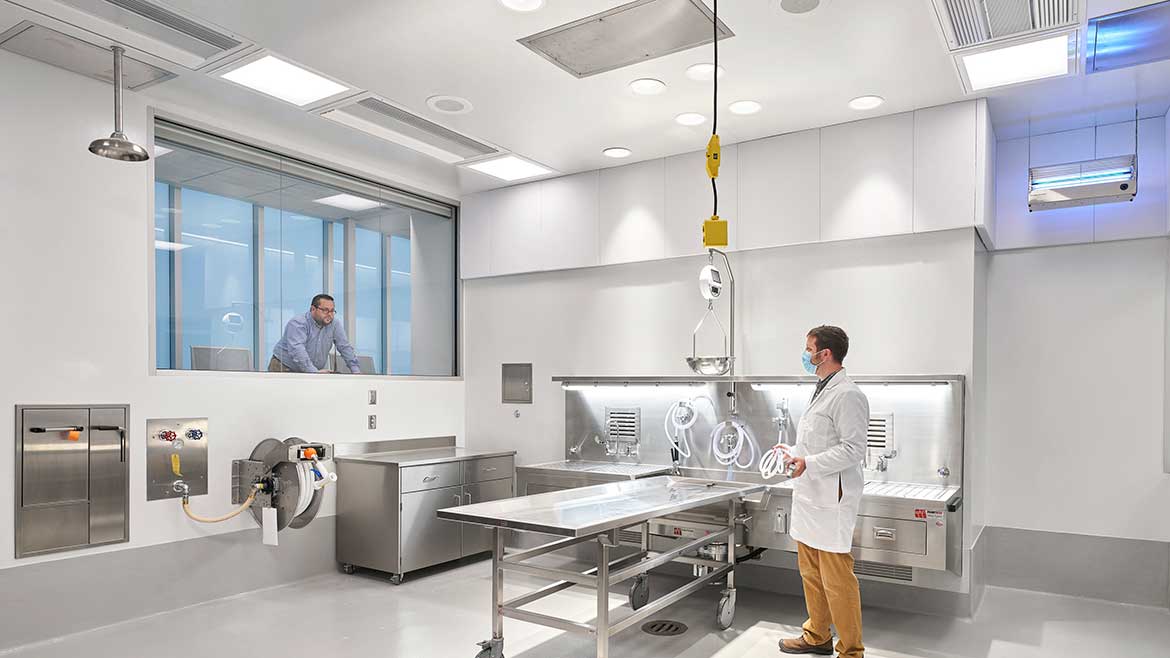William Shakespeare’s play “Hamlet,” Act 3 started with the opening phrase “To be, or not to be.” Hamlet did not give us the answer to that question but provided choices.
“To wait, or not to wait?” to get involved in early programming? I made my choice and that is “Not to wait.”
Because plumbing engineers and designers normally have limited time and budget to complete a lab project, we are normally faced with the questions: “Should we wait for lab planning to identify the plumbing fixtures and equipment before getting involved to save time and budget?” or “Should I get involved early on during the program development?” The answer varies depending on project size and complexity. To me, we always want to be part of early programming no matter what. That allows us to get a sense of the client’s vision, the building, and the team’s goals. This understanding is critical when working on critical hospital or laboratory projects.
Last month, I shared specific examples of Hospitals in California regarding defending the plumbing design against Value Engineering (VE) and cost-cutting using codes. Today, we can look at few examples specific to labs and why it is important to be involved in the initial stages of programming.
Designing plumbing systems for laboratory requires early participation from the plumbing engineers and designers. Unlike other types of facilities, laboratory facilities are mostly customized based on specific programs. Development of a program is normally the initial step when beginning the lab design. Understanding the laboratory design vision and intent is an important key in avoiding any last-minute changes that then have cost impacts and potentially add design complexity.
Below are just a few examples of the importance and value of participating early in programming and concept design on Lab projects.
Lab planners are in a meeting with the client and they identify a need for a process cooling water. The lab planner simply notes on a data sheet that we had process cooling water connections and their locations. If the engineer or designer is present in the meeting, there is the opportunity for follow up questions such as: How much water, what size, what temperature, what quality of water, pressure drop? Reverse Osmosis/Deionized Water (RO/DI) is common on lab projects, and we should be asking the client what type, specific water quality, etc. On more than a few occasions, the clients do not know the type of treated water required, and at those times, we should be helping our client with that decision. If none of that happens during the planning meetings, then engineering ends up behind by not having all the information required.

Image courtesy of SmithGroup
For forensic medicine or medicolegal death investigation (MDI) facilities, the sizing of water heater systems goes beyond simply adding the fixture units like traditional sizing. It requires an in-depth understanding by the plumbing engineers and designers of the program and intended use. The investigator or technician may leave the faucet at the autopsy sink hot water running for the duration of the autopsy session which regularly lasts over an hour. This coupled with any hot water at a service hose reel will significantly affect the hot water demand. If there are multiple autopsy tables and the program dictates a big probability of being used at the same time, we highly recommend using a heat exchanger or instantaneous central water heater in lieu of storage type tank. Sizing in that case is based on the autopsy faucet’s flow rate. This way, the duration of hot water use does not matter.
Floor drains for the autopsy stations are required to be the flushing type. Plumbing designers need to communicate with the design team the location of the flush valves for these drains to ensure they do not conflict with other trades and are easily accessible to users. Floor drain gratings need to be heavy-duty to handle the abuse of equipment and gurneys running over it. Also, the grating spacing cannot be too far apart or it will be challenging for the user to roll a gurney over it as the wheels might get caught.
For laboratory projects, ceiling service Panels (CSPs) are a notable example of unpredictable flexibility. CSPs can have in any voltage or power configuration in combinations and quantity as needed. CSPs can be electrical only but often include data and plumbing. With a modular or standard table length spacing, electrical systems become predictable, and the flexibility is functional. However, there is no greater disappointment than when a client knows a table will fit but does not have access to the expected utilities. Systems planning expectations for the space need to be clear both day one and future.

Image courtesy of SmithGroup
Some facilities may also have a bulk tank requirement such as Nitrogen gas. When a building site is limited, the plumbing engineer’s responsibility is to research options that help the design team understand the site restrictions. If the site has a very limited-service area to accommodate to support the installation and regular filling of the bulk tank, we don’t just let the client and the design team solve this on their own. We can instead use this opportunity to influence the design and present to the client and design team other technologies as an option that may not have been considered by the team.
Development of a program is normally the initial step when beginning the lab design. Understanding the laboratory design vision and intent is an important key in avoiding any last-minute changes that then have cost impacts and potentially add design complexity.
A nitrogen generator may be an option in lieu of bulk tank. This option needs to be presented to the client, but we need to do our due diligence to confirm this meets the program and needs of the users. Conversation between the plumbing engineer and client about the quality of nitrogen required, usage data, current operations and any limitations of staff or facilities to support these systems. Initial information received can be then used to study and compare the cost of ownership, gas purity, efficiency, safety, expandability, and convenience. Central nitrogen generator systems rely on compressed air as its source to extract nitrogen. Utilizing a nitrogen generator will consequently affect the compressed air system quality, pressure, and sizing. It is best practice to connect an auto-switchover manifold with nitrogen cylinders to ensure continuous operation in case of a system failure.
As engineers and designers, we take equal ownership and responsibility for the design of each plumbing system. The design team and lab planners working with users will help in identify the plumbing utilities needed. It is our responsibility to fully understand the details on plumbing utilities and ensure that our design meets the design criteria and the design vision of the project.




